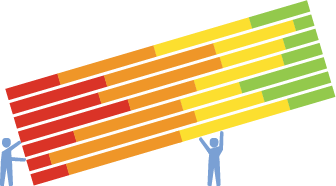What is facioscapulohumeral muscular dystrophy?
Facioscapulohumeral muscular dystrophy An autosomal dominant disorder affecting the skeletal muscles of the face, scapula, and upper arm characterized by muscle weakness in these anatomic areas. The muscle weakness eventually spreads to other skeletal muscles as well.
How do members experience facioscapulohumeral muscular dystrophy?
Top 5 symptoms reported by people with facioscapulohumeral muscular dystrophy*
*Reports may be affected by other conditions and/or medication side effects. We ask about general symptoms (anxious mood, depressed mood, fatigue, pain, and stress) regardless of condition.
Top treatments taken by people for facioscapulohumeral muscular dystrophy*
Who has facioscapulohumeral muscular dystrophy on PatientsLikeMe?
| Age | Proportion | # of patients |
|---|---|---|
| <20 | 2 | |
| 20s | 3 | |
| 30s | 13 | |
| 40s | 9 | |
| 50s | 11 | |
| 60s | 12 | |
| 70+ | 20 |
Distribution of sex
| Sex | Proportion | # of patients |
|---|---|---|
| Male | 34 | |
| Female | 40 |
